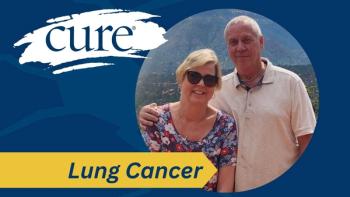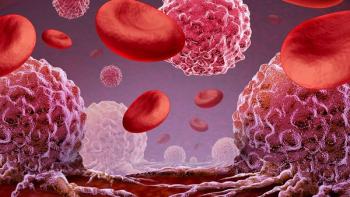
With Less Intense, More Effective Treatments, Survivors of Childhood Cancers are Living Longer
Better treatment and follow-up are being credited with a reduction in the likelihood that survivors of childhood cancers will later die of illnesses caused by their therapy, such as new malignancies or cardiac or lung disease.
Better treatment and follow-up are being credited with a reduction in the likelihood that survivors of childhood cancers will later die of illnesses caused by their therapy, such as new malignancies or cardiac or lung disease. The improvement over the past 30 years is due, in part, to the reduced use of radiation therapy and anthracyclines, a type of chemotherapy.
The findings came from an analysis of more than 34,000 participants in the federally funded Childhood Cancer Survivor Study, which found that, among those who have survived at least five years, all-cause mortality at 15 years after diagnosis has dropped from 12.4 percent to 6 percent.
The results were announced in a press briefing May 31 during the 2015 annual meeting of the American Society of Clinical Oncology, a gathering of nearly 30,000 oncology professionals in Chicago.
“To go back to the 1960s, less than 30 to 40 percent of children would survive cancer; currently, over 83 percent of children (with the disease) will become five-year survivors. It’s estimated that, at 2013, there were over 400,000 survivors in the population, and that by 2020 there will be over half a million,” said lead study author Gregory T. Armstrong, a pediatric oncologist at St. Jude Children’s Research Hospital. “However, these five-year survivors are still at risk for late effects and late mortality. Thus, strategies to reduce late effects by reducing treatment intensity have been used for several decades in an attempt to lower mortality rates and improve quality of life.”
According to previous research, up to 18 percent of five-year survivors of childhood cancer died within 30 years of diagnosis, Armstrong noted during his presentation. Such deaths are attributable to progression or recurrence of the primary cancer, external causes such as accidents or suicide, or other health-related causes — primarily, the late effects of cancer therapy, ASCO explained in a press release.
The study presented May 31 looked at the outcomes of a retrospective cohort of 34,043 patients, chosen from among participants of the Childhood Cancer Survivor Study, funded by the National Institutes of Health. Investigators used the National Death Index, a record of death information kept by state vital statistics offices, to determine which patients had died, and when, ASCO stated. All participating patients were diagnosed between 1970 and 1999, were younger than 21 years of age at diagnosis, and were followed for a median 21 years. Their cancers included leukemia, lymphoma, malignancies of the central nervous system, Wilms tumor, neuroblastoma, and soft-tissue or bone sarcoma, Armstrong said.
The study found that 3,958 patients (12 percent) died during their follow-up period, with 1,618 (41 percent) of those deaths due to “other health-related causes,” including the late effects of cancer therapy — in particular, secondary or recurrent cancers.
Investigators found that all-cause mortality dropped by half over the study period — 12.4 percent of patients diagnosed in the early 1970s died within 15 years of diagnosis, compared to only 6 percent of those diagnosed in the early 1990s. In those who survived at least five years, the cumulative incidence of deaths due to “other health-related causes” – including late effects such as second cancers or heart or lung disease – dropped with each decade. For those diagnosed in the 1970s, the cumulative incidence of deaths from “other health-related causes” was 3.1 percent; for those diagnosed in the 1980s, it was 2.4 percent; and for those diagnosed in the 1990s, it was 1.9 percent, Armstrong said.
Deaths from subsequent neoplasms in five-year survivors of childhood cancers dropped in frequency from 1.8 percent in the early 1970s to 1 percent in the early 1990s; deaths from cardiac late effects from 0.5 percent to 0.1 percent in those same time periods, respectively; and deaths from pulmonary late effects from 0.4 percent to 0.1 percent, he pointed out.
The improvement was most prevalent among survivors of Wilms tumor, Hodgkin lymphoma and acute lymphoblastic leukemia (ALL). Cardiac deaths significantly decreased among survivors of all three cancers, and deaths due to secondary cancer decreased among Wilms tumor survivors only. In ALL, deaths at 15 years after diagnosis due to late effects were reduced from 2.8 percent in the 1970s to 1.9 percent in the 1990s; in Hodgkin lymphoma, they dropped from 4.2 percent to 2.1 percent in those time periods, respectively; and in Wilms tumor, they dropped from 2.2 percent to 0.4 percent in those periods, Armstrong said.
Doctors have driven these results by gradually refining treatment through reductions in the intensity of therapy for many pediatric cancers, even as the effectiveness of treatment has risen, Armstrong said. For example, in the 1970s, 86 percent of patients with ALL received cranial radiotherapy, compared to only 22 percent in the 1990s, he and co-authors wrote. Radiotherapy rates have also been reduced among patients with Hodgkin lymphoma (from 96 percent to 77 percent) and Wilms tumor (from 77 percent to 49 percent). Furthermore, Armstrong said, patients who develop these three diseases in childhood are now being exposed to less anthracycline, a chemotherapy drug that can cause cardiotoxicity.
“The CCSS cohort provides evidence that survivors in more recent eras have a significant reduction in late mortality. For the first time, we’ve been able to attribute that to fewer deaths from treatment-related causes or from late effects of the primary therapy, and this includes lower death rates due to subsequent malignant neoplasms and cardiac mortality,” Armstrong said. “Thus, the strategy of reducing the intensity of therapy to lower the occurrence of late effects, along with promotion of early detection and improved treatment of late effects, is now translated to extend the lifespan of our survivors.”
Armstrong GT, Yasui Y, Chen Y, et al. Reduction in late mortality among 5-year survivors of childhood cancer: A report from the Childhood Cancer Survivor Study. J Clin Oncol. 2015;(suppl; abstr LBA2).





